Further Exploration
Gender and Education
Online Resources:
- http://www.wix.com/themissgproject/
- http://www.ungei.org/resources/
files/Education_from_a_Gender_
Equality_Perspective.pdf
- http://www.womendeliver.org/
knowledge-center/facts-figures/girls-education/
- http://www.oxfam.org/en/campaigns
Films:
- License to Thrive: Title IX at 35
This short length documentary about a breakthrough piece of legislation in the United States is a must see for all of those who are passionate about increasing female participation and leadership in universities and other dominant institutions. Written and Directed by Theresa Moore in 2008, License to Thrive: Title IX at 35 engages the audience with personal stories of triumph and success that followed after Title IX was implemented as part of the Education Amendments of 1972. This amendment was revolutionary as it forbids any collegiate institute in the United States from rejecting or denying anybody’s rights based on sex and/or gender. It goes over the barriers women in education faced prior to Title IX and then talks about various female organizations, programs and grants that were founded as a result of Title IX.
Empowerment through Art
Film Review: Born into Brothels
Born Into Brothels is a documentary about the inspiring non-profit foundation Kids With Cameras, which teaches photography skills to children in the red-light district of Calcutta. In 1998, New York-based photographer Zana Briski started photographing prostitutes in the red-light district of Calcutta. She eventually developed a relationship with their children, who were fascinated by her equipment. After several years of learning in workshops with Briski, the kids created their own photographs with point-and-shoot 35 mm cameras. The film discusses the discrimination these children face baced on caste and gender, and in great detail explores their troubling lives. The proceeds of the film go directly to funding the children's education. It is a hearthwrenching fulm, but does a great job of illustrating the stigma associated with women who participate in sex work.
Women's Rights in Saudi Arabia
Film Review: (Un)veiled: Muslim Women Talk About Hijab
This documentary shows just how varied and diverse the Muslim world is from country to country, counter to the monolithic image that many non-Muslims have of Muslim culture. The movie demonstrates how different upbringings in different cultures greatly influence religious practices, specifically with regards to Hijab, and through speaking with Muslim women from across the globe it shows that Muslim culture and beliefs are just as wide ranging as Judaeo-Christian ones, with as many debates and disagreements about the best interpretation of scripture, the role of Islam in the modern world, and the rights of Muslim women.
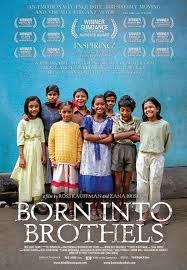

Understanding Ourselves and Our World
Book Review: Culture Jam: The Uncooling of America by Kalle lasn
Culture Jam is a book which explores some of the most serious issues facing modern Western Society and how they relate to the enormous amount of advertising and media exposure we are witness to on a daily basis. The Book identifies how constant bombardment by media and our obsession with consumerism are shaping not only our wallets, but our health, sexuality, and mental well-being. By exploring rising rates of depression, anxiety, and social disorders in relation to the surge in media exposure, as well as discussing gender norms and identification in relation to media, Culture Jam points out the best of the worst things about Western Culture. This book is perfect for gaining a basic understanding of why we think the way we do, and is complimentary to any study which acknowledges media influence in the way we live.
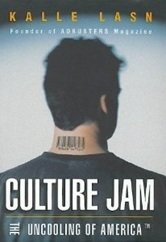
How does Gender define us, and furthermore, how does that definition bind us? Based on one’s gender, they are expected to adhere to a particular set of instructions, given to them by society so they may fit in and be accepted. The moment someone steps outside of these constructs or shows any form of dissent to them, it seems all heads in the room immediately rotate in unison as to suggest it is not permissible. As social beings, it is important to be aware of the effects of the social structures we uphold. Where did these rules come from, and how exactly have they become so engrained into our minds, that we cannot remember a time that we were not mentally bound by them? More importantly, how have these rules been defined by myths of gender, and how does society perpetuate them?
We place too much faith and show a generous amount of compliance toward our society and certain social structures which hold us within its constructs. Moving past simply observing at the way in which media affects how we dress and speak, one should take note at how these social institutions construct, manipulate and perpetuate the way we act, think, dress, speak, love, and live, solely based on the things found between our legs. Furthermore, we should begin to deconstruct the system to see that it is also affecting the opportunities one will be presented with in life based on socially constructed ideas about themselves, and those around them based, again, on the parts located in ones nether regions. This is one major downfall of global society; that we have constructed it to support these ideas, and that those ideas maintain the structure. In short, I ultimately wish to point out that it is not the penis, nor the vagina, that is a valid measurement of ones’ strength, intelligence, capacity to love, nor are they a tool of measurement of ones’ ability in life.
enforced not long ago in 2005 when Harvard President Lawrence Summers stated that is was women’s’ innate deficiencies in math and science which prevented their rise to top positions in those fields, not discrimination.[1]A study related to this myth was performed at the University of Texas on the differences in scores on math tests between genders; this was based on the common misconception (which even Harvard Representatives apparently are not immune to), that men are better at math than women. The study used two separate groups; one in which the students were primed to think about how women were more likely be worse at math, and the other primed to think about
“gender neutral” subjects. The study showed that the reinforcement of the stereotype that women are generally more poor at math actually caused the women to do poorly.[2] It was essentially a self-fulfilling prophecy.
There are a series of basic myths, of which I shall mention only a few, which are constructed through misunderstanding or lack of understanding all together, which plague our society and many others around the world. They influence our social structures to the point where they become “just the way it is”; they become institutionalized, and as a result become part of the framework of our societies and go un-noticed. I aim to point out a few key myths which would appear to weave throughout the foundations of the globe.
Intelligence:
‘Men are more intelligent than women’ or, ‘men are better at understanding more technical information’. Believe it or not, this myth is still held in the minds of many people throughout North America, and certainly throughout the world as is evident in social media and academic study. Though there does exist a resistance to this mood. Optimistically, this may be a dying breed of thought; however societies throughout the world, including the West, are constructed on this very myth. Intelligence has been a hot point on the topic of gender throughout history, and has shaped the way our society is structured; in our case, it was a patriarchal design where men stood supreme in intelligence and understanding. This idea was
“High school girls who think of math as a “male thing” are less likely to go on in math and are less likely to do well in math”.[iii]
It is the young age at which we begin to embrace our
roles in society that is disheartening.
“Would you like a girl toy, or a boy toy?”,
we hear going through the drive-thru at McDonalds.
It is at this young age when we are learning to speak
and walk that is the point at which our gender identities
are formed. Interacting in Kindergarten, we are
already being primed to think and act like our gender.
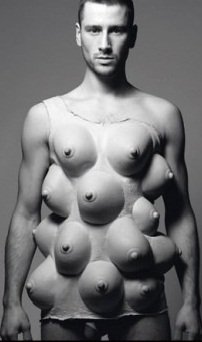
Render By Gender
This raises more questions; like how many other things are affected by the “facts” we know and have known since we were old enough to speak? Only in the last century have we begun to see an alteration or phasing out of these gender norms, biases, and structural inequalities which have been based on a myth that each gender is inherently different in every way imaginable. Furthermore, that each is allocated certain roles in life, not by society, but by their chromosomes. It is myths which have provided history with gems such as the female inability to do math, her inability to understand complex scientific thought, a female’s lack of knowledge to make an informed vote. Furthermore, that if she demonstrates intelligence higher than that of a potato, it designates her to be a user of the black arts. These are myths from a variety of periods throughout history dating back hundreds of years or more. However, myth has affected laws, religious beliefs, and practices throughout the world and its history. These myths in turn not only affect women, but men as well
Myth 2: ‘Men are natural leaders and breadwinners’ – ‘the woman’s place is in the home’. This is a myth which in the West, is in the beginning of its decline; or I would at least hope so, as more males take on roles that would traditionally have sent them into exile from the world of men, and women take on roles which would have seemed out of place for them just ten to fifteen years ago. However, again, much of the developing world is built on the ‘fact’ that men are natural breadwinners and that women should not work outside the home, or at all.[i] The social discrimination faced by a man who may not be very good at providing for his family is made worse when the same discrimination and stigma prevents his wife from aiding him in earning an income. In certain areas of the world where these stigmas hold strong, a woman and her family may be thrown into poverty due to the loss of a husband, father, or brother due to the sheer disapproval and shame associated with working.[ii]Though there may not be laws which directly impose these values on society, their existence in the beliefs of those in charge, results in a lack of initiative to end these stigmas.
We have expectations placed on us the moment our gender is identified before or after birth. For example, the idea in society that a male must be the breadwinner, must be head of the household, must be strong and must not stray from the masculine ideal is pushed on us, still. It is enforced by what we see through television and in magazines, by parents, and even by elected officials.[i]There are still members of society who believe, that to follow a discourse of gender roles and dismiss the existence of inherent abilities unique to a particular gender, is to break down the fabric of our society. In short, yes, that is exactly what it is. The fabric is tattered and stained, and needs replacing. It is time that we begin a worldwide reflection on the ways we think and why we think them, especially with regards to gender. On this note:
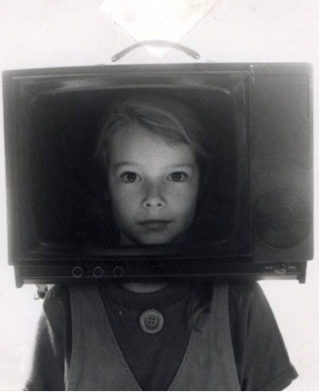
---------------------------------------------------------------------------------------------------------------------
Taking into account that we have these subconscious beliefs or assumptions of the role of each gender, we should then analyze the effect these assumptions have had on the structure and opportunities presented to each gender in society. One may argue against any remaining gender inequality in the workforce; that feminists have no valid stance when claiming that, to this day, there is still income inequality based on sex or gender. Unfortunately, the legacies of a patriarchal society which still remains today maintain an unequal playing field with regard to occupation and income. Though it is illegal to pay a woman less than a man for her labor, as set forward in the Canadian Charter of Rights and Freedoms, it is not in fact illegal to set the value of certain work to be worth lower wage earnings than others, such as traditional women’s’ occupations. An example of such being nursing and nutrition.[i]The society which reined throughout the early twentieth century generally maintained values which confined women to certain areas of labor such as domestic work, secretarial work, primary and secondary education, and occupations which were believed or deemed to be less deserving of greater pay. This labor was undervalued, and thus, the now, “Women’s’ work”, was deserving of less pay than “Mans’ work”.[ii]The traditionally female dominated fields of work which were seen as deserving of less pay were education, nursing, nutrition, secretarial work, textiles, phone operator service, and garment work, among others; which remains in place today.[iii]It would seem more so now, that these gaps were not mended, but were abandoned as women began moving into male dominated fields of occupation, creating the perception that there is now in effect, income equality. The point of this is to draw fact to the effects that myths of gender have had on the workforce regarding female abilities, not due to her academic capabilities or physical characteristics, but because of her gender. The resultant construction and allocation of “Women’s Work” has resulted in undervalued, and institutionalized pay standards in those fields.
Now, in the twenty first century, it may be hopeful or idealistic to say we may be moving toward such a discourse which counters these myths, and as a result sends us into a regression from these values and practices, due to academic influence. However, there still remains a clear income gap, media influenced gender roles, and the perpetuation of the classic myths which brought us to this mess in the first place. It is necessary that this discourse be spilled out from the higher learning institutions, and into the secondary learning, middles school, and elementary institutions. There needs to be understanding of the origins of our thought and resulting structures in order to mend the misplacement of value and backwardness of society. We need this in order to ensure that in the future, each person is met and known as a human first and judged accordingly; that being that regardless of gender, as a human being, they are capable of anything without restriction by those parts of their anatomy which are irrelevant in the first place.
By Ryan Fernandez
----------------------------------------------------------

------------------------------------------------------------------
--------------------------------------------------------------------------------------------------------------------------------
[1] Barnett, R., & Rivers, C. (2004). Same difference, how gender myths are hurting our relationships, our children, and our jobs. New York: Basic Books.
[2] P, B., & R, J. (1999). A burden of proof: Stereotype relevance and gender differences in math performance. In Journal of personality and Social psychology (76 ed. pp. 246-257). Retrieved from http://homepage.psy.utexas.edu/homepage/faculty/josephs/pdf_documents/Brown_Josephs.pdf
[iii] Campbell, B., & Storo, N. (1994). (3) girls are… boys are…: Myths, stereotypes, and gender differences.
[iv] Staff. (2012, March 28). Rick santorum during bowling alley visit: 'friends don't let friends use pink balls'. Huffington Post. Retrieved from http://www.huffingtonpost.com/2012/03/28/rick-santorum-bowling_n_1386504.html?ref=elections-2012
[v] Kabeer, Naila (2000) “Renegotiating purdah: women workers and labour Market decision making in Dhaka”, Chapter 4 in The Power to Choose. London: Verso
[vi] Kabeer, Naila (2000) “Renegotiating purdah: women workers and labour Market decision making in Dhaka”, Chapter 4 in The Power to Choose. London: Verso
[vii] Blau, F., & Kahn, L. (2000). Gender differences in pay. In NBER WORKING PAPER SERIES Cambridge, MA: NATIONAL BUREAU OF ECONOMIC RESEARC. Retrieved from http://www.nber.org/papers/w7732.pdf?new_window=1
[viii] Guy, M., & Newman, M. (2004). Women’s jobs, men’s jobs: Sex segregation and emotional labor. In Public Administration Review (64 ed.). Retrieved from http://onlinelibrary.wiley.com/doi/10.1111/j.1540-6210.2004.00373.x/pdf
[ix] Guy, M., & Newman, M. (2004). Women’s jobs, men’s jobs: Sex segregation and emotional labor. In Public Administration Review (64 ed.). Retrieved from http://onlinelibrary.wiley.com/doi/10.1111/j.1540-6210.2004.00373.x/pdf
[a] Nathman, A. (2011, November 9). Mom & pop culture: Mcgender. Bitch Media, Retrieved from http://bitchmagazine.org/post/mom-pop-culture-mcgender-unpacking-the-happy-meal
Did You Know?
- The first homosexual character to appear and be explored on mainstream television was in 1971: All In The Family. [a]
- IT was not until the early 1990s that gender specific toys were marketed in McDonalds Happy Meals. [b]
The current food crisis in East Africa has left millions unemployed, homeless, starved, and dehydrated— the worst drought to hit East Africa in 60 years.[1] But what caused such a massive crisis, and who is paying the biggest price?
As fears about food security slowly move into focus in the international community, much of East Africa is being divvied up once again for its fertile land; even the head of the United Nations’ Food and Agriculture Organization, Jacques Diouf, is calling some projects “neocolonialist”.[2] The new phenomena of land grabs in East Africa by private investors and state-led initiatives begs immediate attention. Although there is a movement within the international political economy to support this trend, land grabs pose a real threat and has the potential to lead to grave human and environmental degradation. Land grabs compromise the autonomy of East Africans, especially women, to make a living and to provide food for themselves and their families.
Agribusiness has largely snubbed its’ nose to those at the very bottom of the food production chain. This is problematic for numerous reasons, mostly because it affects millions of people. In Kenya alone, 75% of the population lives in rural areas.[3] They are possibly subject to these land grabs and have little autonomy over the fate of their livelihoods that are already extremely sensitive to market fluctuations in the price of raw goods. This vulnerability is especially true for women, as 90% of rural women in Kenya work in the agricultural sector.[4] Kenya isn’t the only East African country where the overwhelming majority of rural women work in the agricultural field. It is estimated approximately 60-80% of all food grown in Africa is produced by women.[5] Land tenure deals have a direct effect on the lives of rural women by stripping them of their source of income, an incredibly harmful and dangerous fate for such a vulnerable population. This is because rural East African female farmers are born into overwhelmingly patriarchal societies that govern their labor, their access to land within the context of customary land rights, and are therefore further disadvantaged by liberalization and market-based reforms.
The nature of rural East African women working in the agricultural sector is severely limited by the constraints of their gender in a patriarchal society. There are wider customary laws and norms that women are always subjected to, such as issues of labour, health, and childcare. Stewart writes “…agricultural labour is guided by wider community norms which embody assumptions about gender roles.”[6] The value placed on women’s labour is significantly lower than their male counterparts, dictated by specific gendered work that is in the realm of their familial responsibilities. Though advocates for African women’s rights push for tighter labour laws and fair wages, author Ann Stewart explains: “Much of the agricultural work undertaken by women is ‘informal,’ unregulated by contracts of employment or labour laws because women often labour as family members, rather than owners on farms.”[7] This poses a roadblock for those women wishing to get fair compensation from land tenure deals. If women who farm don’t own their own labour or are severely underpaid, it is reasonable to conclude that if compensation was given to African residents, their husbands or fathers would be the one’s benefiting from it. This would further strengthen their financial control over their wives and daughters.
Liberalization schemes and market based reforms rarely benefit small famers, especially rural women. This is due to their inability to compete in such a cut-throat, tumultuous market. Author Ann Stewart explains that women are particularly hurt by liberalization, as it leads to a roll back of state services such as health care and education—issues that directly affect women.[8] She adds that liberalization schemes also lead to reduced tariffs, which lead to a smaller tax base, leaving governments with little spending money on social services.[9] With less money spent on social services, women have little option but to demand more from themselves and their female children. These issues are further exacerbated when one considers that “the risks within market-oriented strategies include economic marginalization and loss of land…”[10]Land tenure deals understandably place an incredible amount of stress on small farmers, however, in the world of privatization, new land market opportunities have tended to disadvantage women, as men find it easier to appeal to this new emphasis on investing.[11] With less money, less opportunity, and fewer social services, East African women have historically turned toward their extended family for support. But as more pressure is placed on the value of land, society grows more individualized, and the economy more privatized, notions of reciprocity and social safety nets of extended families are breaking down, further disadvantaging women.[12] Already in a vulnerable position, liberalization and privatization schemes place great stress on rural female farmers, as they simply have very few resources to support themselves and their children.
[1] Oxfam Canada. (2011, Fall). Oxfam responds to food crisis in East Africa. Oxfam Canada News,p.1,6.
[2] “Buying farmland abroad,” 2009, para. 26
[3] Stewart, 2010, p. 26
[4] Stewart, 2010, p. 32
[5] Englert & Daley, 2008
[6] Stewart, p. 31
[7] Stewart, p. 31
[8] Stewart, p. 32
[9] Stewart, p. 32
[10] Jacobs, p. 181
[11] Englert & Daley, 2008
[12] Englert & Daley, 2008
One of the reasons why land tenure deals pose a real threat to East Africans is that it removes them from their position as farmers in the agricultural production chain. In her book “The Challenge for Africa”, Kenyan activist and Member of Parliament Wangari Maathai writes:
“Our food might be produced in Kenya— either chickens or rice, as well as some greens— but the income received from it generally flows in one direction: out. Consequently, the money brought to rural areas through the sale of commodities such as cash crops is then siphoned back to the town where the consumer goods are transported from, and eventually repatriated to the countries that produce them.” [1]
Replaced by foreign farmers, land grabs force East Africans to be removed from the circle of economic activity, and all the money and food produced from the harvest goes directly to the purchasing countries without a penny distributed to small farmers.
The system of agricultural production already financially benefits those at the top rather than the bottom. Stewart explains: “By placing a premium on product development, value chain coordination and marketing, the system delivers the bulk of the gain to those involved in marketing and retailing, rather than growing crops.”[2] If international corporations like Monsanto are already making a large return on agricultural production, why must they insist on completely removing East Africans from the picture? The work of smallholder farmers isn’t lucrative—it is barely enough to survive on. To insist on their removal is undeniably inhumane. But as is the case with all other privatization schemes, to try and compete alongside these companies is more than financially difficult— it’s nearly impossible. Stewart states:
“Those who continue to pursue a livelihood in local markets must contend with the shadows of global markets, often finding themselves disadvantaged by changes associated with market development.”[3] Furthermore, due to their gender obligations and restrictions, female smallholder famers simply do not have the financial means to complete any post-harvest activities, such as large scale sorting, packaging and refrigeration.[4] Unable to compete in the shadow of global agribusiness giants, female farmers are left to find other methods of supporting themselves and their families.
Further exacerbating the many problems involved with land grabs is the issue of customary land ownership. In an effort by governments and the World Bank to formalize land ownership in much of East Africa, land titles were granted to those who registered their family’s land. Stewart accurately explains in detail the problematic tendencies with customary land ownership:
“Land is subject not only to the state law system but also to the customary land tenure systems of its [Kenya’s] 42 ethnic communities. Under the long-running Kenya formalization process, owners of customary titles are a free simple estate in the land, which can then be used and disposed of with minimal restrictions.”[5]
Unable to claim land as their own, governments are free to dispose communities that have been residing on pieces of land for hundreds of years without much trouble. Stewart writes, “customary rights of use are not recognized under the Registered Land Act, and so are not included as overriding interests.”[6] Land titles however are only granted to males, women’s access to land is only through marriage, divorce or inheritance. Unable to access markets, command their labour, or own land women are utterly left helpless—dependent on their husbands. In Kenya, it is estimated that women own 1% of registered private land, 5-6% hold land in joint names.[7] Women’s lack of opportunity to secure land rights under vastly patriarchal societies make them incredibly vulnerable to land grabs for several reasons; they are unable to receive compensation for land they predominately work on, and they have no negotiating power in community discussions regarding the customary uses of land, and their relocation.[8] Any attempts to remedy women’s lack of access to land has been futile since formal land titles are the only thing that are recognized. Women are thus ignored by any state lead initiatives[9] However, the situation isn’t entirely bleak, Englert and Daley explain: “…tenure reforms can be shaped and influenced by those who are concerned to protect women’s land rights.”[10] Because host East African countries are almost jumping at the opportunity to create land tenure deals, lobbyists, advocates, and even those countries buying or those investing in the land, have the unique opportunity to address gender inequality. Englert and Daley write, “it requires that gender be addressed seriously and integrally in all land policy, administration and reform initiatives.”[11] This could have a huge impact on rural East African female smallholder famers. Though exact figures aren’t yet available for the number of people displaced by land tenure deals, it can be assumed it is close to tens of thousands of people worldwide.
As the rate of successful land grabs continue to grow, it is morally imperative that a code of ethical conduct for foreign countries or businesses be adopted in order to eradicate further violation of human rights. This seems like a viable solution, as purchasing countries are the ones courting host countries, therefore host countries can set forth their agenda and expectations. As female rural smallholder farmers are already disadvantaged by liberalization schemes and patriarchal East African society, a preferential hire agreement of locals, particularly women who have previously worked their land would promote economic independence and provide new opportunities for them, such as learning new technological skills on new machinery. There would of course have to be a handsome compensation for those thrown off their land and environmental regulations clearly outlined and put into effect. Stewart writes: “The inclusion on a ‘social clause’ requiring all members [of the WTO] to enforce minimum labour standards was opposed by the majority of states, particularly in the developing world, and business lobbies.”[12] But because host countries are the ones being courted, they have the unique opportunity to conduct business that serves the purpose of ultimately bettering their citizens financially and socially. There is the potential for the fate of small-scale rural female farmers to continue making a living for themselves and their families on their farms, Jacobs states “…these examples indicate that positive outcomes for women within land reforms require democracy, transparency, and commitment to gender equity.”[13] It requires a commitment to change by policy makers, lobbyists, foreign countries and agribusinesses. To correct this prevailing bottom line ethos, they must favor a more just and principled dedication to sustaining the livelihoods of those, who thousands of kilometers away produce our dinner.


Works Cited
Englert, B., Daley, E. (Eds.). (2008). Women’s land rights and privatization in Eastern Africa. Woodbridge: James Currey.
Jacobs, S. (2010). Gender and Agrarian Reform. New York: Routledge
Maathai, W. (2009). The challenge for Africa. New York: Pantheon Books
Peterson, L. E., & Garland, R. (2010). Bilateral investment and land reform in Southern Africa. Retrieved from http://site.ebrary.com.ezproxy.library.dal.ca/lib/dal/docDetail.action?docID=10406256
Stewart, A. (2010). Engendering responsibility in global markets: valuing the women of Kenya’s agricultural sector. In A. Perry-Kassaris (Ed.), Law in pursuit of Development (pp. 26-40). New York: Routledge
Buying farmland abroad: Outsourcing’s third wave (2009, May 21) The Economist. Retrieved from http://economist.com/node/13692889
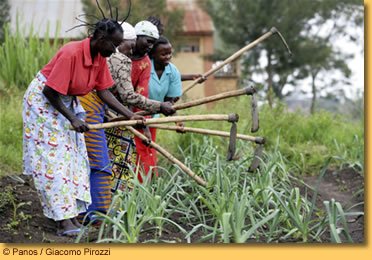
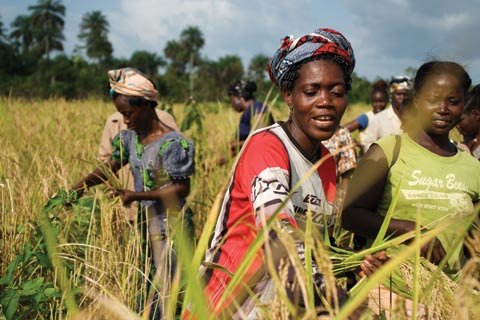
Did You Know?
Approximately 60-80% of all food grown in Africa is produced by women (Englert & Daley, 2008).
90% of rural women in Kenya work in the agricultural sector
(Stewart, 2010, p. 32).
In Kenya, it is estimated that women own 1% of registered private land, 5-6% hold land in joint names
(Stewart, 2010, p. 34)
Get Your Hands Off Our Land
By Arielle Cohen
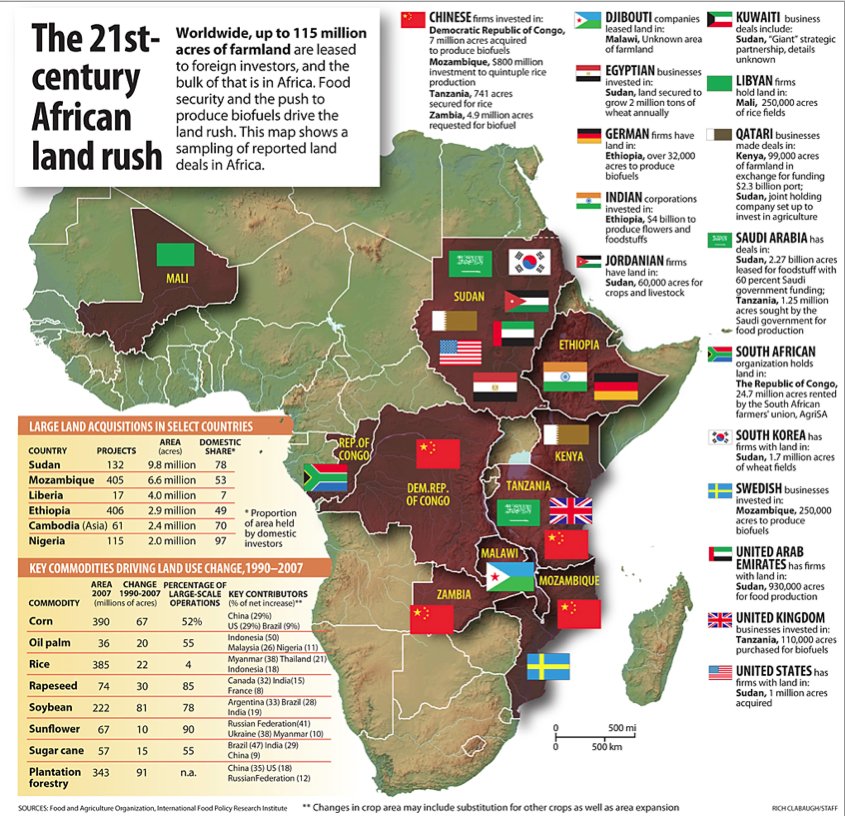
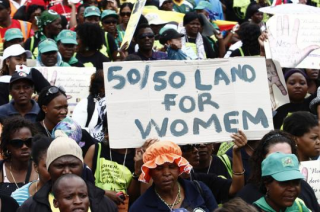

The Long Road to Reform
By Alec Cumming
Arrival in Riyadh International Airport, and the first steps taken in Saudi Arabia, has a distinct feeling of significance for a western traveler. Immediately one is faced with the drastic cultural differences present, perhaps the most obvious of all can be found in the presence of Saudi women. Or rather, a lack of presence. There are no female airport workers, or indeed female workers of any sort to be seen upon arrival. The only women in sight are covered head to toe, wearing the niqab and the abaya to cover their entire bodies, and move like shadows behind their male escorts.
As a male traveller, I was spared the enforcement of a dress code, since there is none for men. But all women, no matter their descent or religious beliefs are required by law to wear the niqab, to cover the head and face, and abaya, to cover the body to the toes, at all times in public. Compliance with the law is ensured by the Mutaween, or religious police, who operate almost entirely unrestricted in their enforcement of the official policies of the Kingdom[i]. Punishment for any infractions are often swift and brutal in nature, with the accused having no access to a lawyer, and no semblance of a fair trial before being subjected to the will of the Mutaween, be it torture, flogging, maiming or beheading[ii]. Even small infractions of the dress code can result in public beatings or arrest, keeping women well in check.

conditioned to expect male dominance and female subordination at all times, something which is not easily undone.
The level of institutional discrimination against women in Saudi Arabia is unrivaled. The laws in place are unmatched in their blatant disregard for the notion of female mobility, and the method of law enforcement is barbaric at best. However, the recent decision to allow women to vote and run in elections is an extremely promising development, and the actions of Saudi reforms like Rania Al-Baz and Nadia Bakhurji are creating important discussion around traditionally taboo topics. There are sign of change. The challenges however, years of male domination that have created an ingrained expectation of complete authority over women, will not be overcome quickly or easily. Indeed, a substantial shift in cultural values is required for women to approach any sort of equality, something that will likely be fraught with backlashes and violence, and thus cannot and should not be rushed. The events in the lead up to the 2015 elections will be extremely telling in terms of male acceptance of the idea female voters, and the results of the election, should it go smoothly, could be the start of a more profound and widespread change in the Saudi mindset.
[i] Lichter, I. (2009). Muslim women reformers. Amherst, NY: Prometheus Books.
[ii] Lichter, I. (2009). Muslim women reformers. Amherst, NY: Prometheus Books.
[iii] Doumato, E. A. (2003). Education in saudi arabia: Gender, jobs, and the price of religion. In E. Doumato & M. Posusney (Eds.), Women and Globalization in the Arab Middle East (pp. 239-257). Boulder, CO: Lynne Rienner Publishers.
[iv] Lichter, I. (2009). Muslim women reformers. Amherst, NY: Prometheus Books.
[v] Lichter, I. (2009). Muslim women reformers. Amherst, NY: Prometheus Books.
[vi] Lichter, I. (2009). Muslim women reformers. Amherst, NY: Prometheus Books.
[vii] Silvey, R. (2008). Transnational domestication. In C. Elliott (Ed.), Global Empowerment of Women (pp. 101-117). New York, NY: Routledge
[viii] Variety Arabia Staff. (2009, March 06). Saudis open screen door. Variety,
[ix] Buchanan, E. (2011, September 25). Women in saudi arabia to vote and run in elections. BBC
[x] Lichter, I. (2009). Muslim women reformers. Amherst, NY: Prometheus Books.
[xi] Lichter, I. (2009). Muslim women reformers. Amherst, NY: Prometheus Books.
[xii] Lichter, I. (2009). Muslim women reformers. Amherst, NY: Prometheus Books.
[xiii] Lichter, I. (2009). Muslim women reformers. Amherst, NY: Prometheus Books.
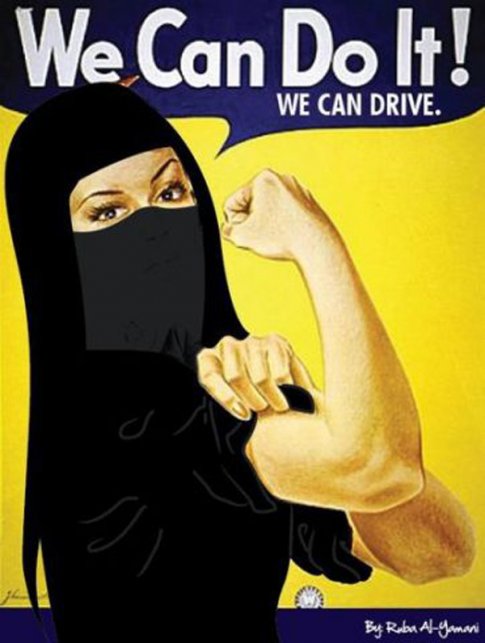
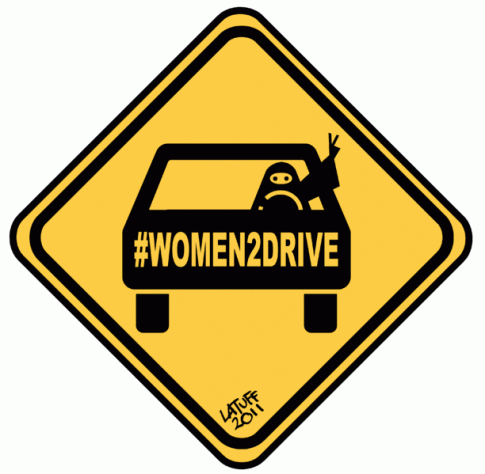
Saudi laws regarding women are entirely religious ones, overseen and interpreted by religious scholars under the oversight of the King, who maintains an absolute, and undemocratic authority. Under these laws, women are heavily restricted in nearly every way imaginable; banned from driving, traveling alone, or even checking into a hospital without written permission from a man[iii]. Marriage laws allow for men to easily obtain divorces, while women must request a court approval, where a woman’s testimony is treated as presumption, rather than fact[iv]. Indeed there are a variety of forms that marriage in Saudi Arabia can take, including temporary marriages, marriages that require no financial support from the husband to the wife, and marriages that allow for older men to marry significantly younger women, or even girls. There are even accounts of 3 three old girls being married off by their fathers, with the marriage being consummated by the age of 9[v].
There are somewhat more encouraging trends to be found in the Saudi education system, where women make up 58 percent of university students, although they are restricted from studying certain subjects that are considered ‘male’, like engineering. These high university enrollment numbers are somewhat of an oddity however, since women make up a lowly 5 percent of the workforce in Saudi Arabia, and an estimated 33 percent of Saudi women are believed to be illiterate[vi], thus showing not only that this university education is rarely put into practice, but that a vast number of women are still denied even basic education. In a similar case, while there are now a handful of high profile women working high ranking positions in the Saudi government, it is only through their privileged backgrounds and a wealth of connections that they have risen to positions of power, while the vast majority of women in the country have no power at all.
Recent improvements for women include a change to be recognized by name on government identity cards in 2001, rather than the property of a male[vii]. In 2008, women were giving the right to check into hotels on their own, and this year, for the first public screening of a movie in 30 years, it was deemed acceptable for women to watch the movie in the presence of men[viii], but the most significant change was the announcement that women would be allowed to vote and run in elections beginning in 2015[ix]. Despite most of these gains being meager and long overdue, many traditionalists were, and remain, drastically opposed to even the smallest of these reforms and allowances, showing a complete lack of acceptance for the improved rights of Saudi women. Indeed Saudi Clerics and traditionalists are quick to write off women’s rights as a form of cultural imperialism; the corrupting effect of western culture on the Arab world. Such a stance provides no avenue for discussion on such issues with westerners concerned about the rights of Saudi women, but there are, however, reformers living under these conditions who challenge these conditions on moral and, quite importantly, religious grounds. Believing that the Quran has been misinterpreted to oppress women, this scripture based argument is much harder to ignore than the criticisms of the western world.
One such reformer is Rania Al-Baz, who is perhaps the most high profile advocate for change in Saudi Arabia following her appearance on an episode of Oprah. Al-Baz was nearly beaten to death by her husband in 2004, who left her unconscious outside of a hospital with extensive injuries received from repeatedly smashing her head against the floor of their home[x]. As a well-known news broadcaster, Al-Baz was in a position to make a stand against this type of abuse which is all too commonly ignored in Saudi Arabia. Al-Baz became the first Saudi Woman to press charges on her husband for abuse, and in large part due to the media attention paid to the story, Al-Baz won the case, but pardoned her husband in exchange for a divorce and child custody. This was a tremendous victory for the recognition of women’s rights in Saudi Arabia, but Al-Baz’s actions following her victory, in particular her appearance on Oprah where she was seen with an unveiled face, tainted the victory. Her unveiled face was as far as the thought process went for many Saudis; she invited the violence from her husband through her inappropriate behaviour[xi]. Al-Baz’s case provides one of only examples in Saudi Arabia where a women was able to effectively use the existing power structure in her favour, to protect herself from an abusive husband, but once she stepped outside the rigid gender role set for women, the impact of the decision was easily deflected by the cultural demands of Saudi men.
Nadia Bakhurji is another prominent female Saudi reformer, who attempted to run for political office in 2005 using a legal loophole, but was denied the chance to run by the Saudi government, citing logistical issues[xii]. Bakhurji believes that the issue is a cultural one at the core, rather than a religious one, explaining that “it is not in our culture to tolerate. We are very judgemental. This is wrong. We need to educate people to be tolerant rather than judgemental… this kind of narrow-mindedness which is programmed… socially from an early age needs to be changed. The only way we can move forward is to get rid of this ignorance”[xiii]. Indeed, while the legal changes have been slow to come, there does seem to be some willingness to consider change at the top. The real resistance to change comes from the male population at large, who has been
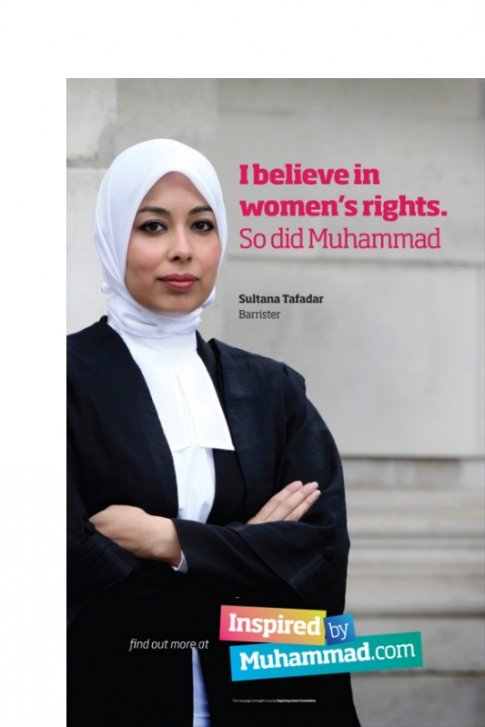
The Rising Rights Movement in Saudi Arabia
Did You Know?
-58% of university students in Saudi Arabia are women
-The first elections allowing female participation will be held in 2015
-Women constitute only 5% of the workforce
Have you ever considered how your school functions as an institution? At crucial ages of development, it is our elementary and secondary schools, through established curriculum and social interactions in classrooms that socialize us and influence our own identity formation. Teachers play an active role, whether they are aware of it or not, in establishing gender norms by following curriculum that teaches heteronormativity and gender bias[1].
The role of curriculum in perpetuating gender bias among youth is being recognized by academics everywhere. Especially when youth enter into highschool, the materials they read and the standardized curriculum they follow is extremely biased. Teachers must become more aware that they might be “using texts that omit contributions of women, that tokenize the experiences of women, or that stereotype gender roles”[2].Is the burden solely that of the teacher’s though? No. Educational resources that are deemed as acceptable materials to be taught within the provincial educational system are decided by the Ministry of Education. An important role is also that of particular publishing companies that focus specifically on educational materials. The decisions made by these key individuals, authors and ministers, all play a part in perpetuating societal norms and gender stereotypes through the educational system. For example, English teachers are given a list of books that are acceptable to review, as well as required readings. Shakespeare was a literature genius, and although I enjoyed learning about his metaphors and themes, I never even considered that perhaps a “female” Shakespeare existed at one point. Perhaps there were female writers at the time who were just as thought provoking. We are taught what the word “misogyny” means and the only course that is most likely to offer reading materials written by women is Home Economics. Doesn’t anybody else recognize how problematic it is that these may be the only reference to the female gender in secondary school? It is important that teachers are “made aware of the bias they are reinforcing in their students through socialization messages, inequitable division of special education services, sexist texts and materials”[3]. But, the step to a more equitable form of education lies at fixing the root of the problem: we must convince the Ministry of Education in every province about the benefits of teaching gender-equitable materials. Research has shown that “gender-equitable materials allows students to have more gender-balanced knowledge, to develop more flexible attitudes towards gender roles”[4]. Although this seems like an impossible task, there are students who are beginning to notice how education works as an institution to perpetuate forms of gender bias within the school setting.
A group of female university students were relaxing one day when they began to talk about how much they love and have learned from their university gender studies courses. Dilani Mohan, Sheetal Rawal, Sarah Ghabrial and Lara Shkordoff were students at the University of Western Ontario when they met at the Women’s Issues Network on campus[5]. Reflecting on how much gender studies has empowered them as individuals while educating them about different forms of oppression in society and issues dealing with sexuality, these four friends decided to take action. As high school is a time of uncertainty and self discovery, it is not an easy time for many people. Gender Studies can offer a critical view of the world, and help students to not only become more aware of, but make sense of their place and identity in society. In 2005, Mohan and her friends decided to start the Miss__G Project for Equity in Education.
Letters to the Editor:
Thanks Damn the Man for your last issue dealing with the institutionalization of gender. The article called 'Equity in Education: Miss__G Project' provided some great information that I think everyone needs to hear. We often forget that the prescribed curriculum we all follow subtly contains everyday societal norms and biases. Gender is not a topic that is often talked about in high school because it is assumed that everyone is heterosexual. But this is not the case and I think that by introducing a discourse around gender, it could benefit everyone and make every student more confident with their identity. I find the Ministry of Education tries to ignore the fact that we live in a society that is diverse and they forget that not everyone fits into the prescribed categories of Male and Female. High school is such a tough time for youth, and I think that if organizations like Miss__G succeed, that the next generation of youth will be far more accepting and our society will become a better place. Let’s open up this dialogue and get everyone to think critically about their place in this world. I started a campaign at my school and more than 200 of my peers sent their face to our MPP in solidarity with Miss__G!
- Laurie, Saskatchewan
Megan Tremblay currently works as a community nutritionist specialising in paediatric and children’s nutrition. She is also the co-founder of Breakfast for Learning and runs the program at a local elementary school in Victoria. Currently working toward her Masters in Human Nutrition at the University of British Columbia, she is actively involved with a group called Mothers and Daughters which
specializes in women’s and children’s health.
Damn the Man! Spring 2012
Contributors:
Arielle Cohen
Alec Cumming
Ryan Fernandez
Tasha Rennie
Megan Tremblay
Damn the Man!
In this spring issue of Damn the Man!, we traveled across the globe to discover the various ways that gender inequality has been institutionalized. What do we mean by institutionalizing gender? We’re glad you asked! Institutionalization is the process by which everyday gendered behavior in society becomes legitimized within the system through the development of policies and regulations. Gender roles become normalized as they are incorporated into larger societal structures and institutions, thus creating inequality. This inequality rests upon the passive acceptance by society that being a male is superior to any other gender. Gender is generally accepted to be a socially constructed idea based upon our physical make-up. Despite the fluid nature of gender, it is still treated as a concrete notion within many societies that holds a lot of weight in determining how people are treated.
From the moment we are born, the first question that people ask is: Is it a boy, or is it a girl? Even before we inquire about the health of the baby, we have this need to know their gender. Why does it matter so much? Why do we have to identify one another first and foremost based upon our gender before we can conceptualize them as a person? We rarely take the time to reflect on how the answer to that first question will not only permanently mark your identity but will dictate the various opportunities available to you later in life.
Our first article by Ryan Fernandez digs deep into the topic of how we are trained to think about gender from a very young age, and how this affects the choices we make in life. Like robots down a conveyor belt, our paths our predetermined for us in society based upon what roles are acceptable for each gender. This training does not only take place on a broad societal level, as specific messages about gender have seeped into the very institutions we call learning spaces. Megan Tremblay hit the road and went around Ontario to study how educational institutions are one the most pervasive tools used to socialize our children into normalized gender roles. She visits Western University and teams up with the founders of Miss__G Project, an organization working to implement Gender Studies courses in secondary schools in Ontario, to write her article Equity in Education. Her article stresses the importance of creating a safe place based on gender equality in high schools, and to bring awareness to the sensitivity of people struggling with gender identities. Tasha Rennie’s article challenges heteronormativity head on and brings to our attention the struggle that many people must face in society: that of gender identity. Tasha has been researching the inclusion of gender identity and transgender rights within a human rights framework. Touching heavily upon our theme of the importance placed on gender before conceptualizing one another as people, this article challenges the notion of gender conformity.
As we shift our attention to an international focus, the manner in which gender inequality is institutionalized becomes much more
apparent. From public places, to property rights, and the workforce, the cultural biases that contribute to the creation of gender roles become engrained in society through policies and legislation. We journey with Alec Cumming into a world where religion plays the key role in the social and legal interactions of Saudi Arabia, leaving women distinctly disempowered. He speaks with several Saudi women's rights activists, and examines the difficulties in promoting change in such a traditional society, where discrimination is law, and the law is scripture. In Get Your Hands Off Our Land, Arielle Cohen analyzes the effects of the current famine in East Africa. She critiques the international political economy for the growing trend in land acquisitions, or land grabs. These unjust practices leave millions of women, who depend on agriculture production for their livilehood, destitute and begging for basic land rights that their governments that their governments deny them of.
Editorial


The Miss__G Project was founded on the belief that the failure to teach and discuss important issues like gender, race and sexuality in secondary school perpetuates societal gender norms and biases. Miss__G believes that without the critical engagement of students in secondary school, they may not only accept stereotypes as truth, but may learn that is it wrong to challenge them. Secondary schools should be offering courses which help students make sense of who they are and what the real world is like. Identifying as a “grassroots young feminist organization working to combat all forms of oppression in and through education, including sexism, homophobia, racism, classicism and albeism”[9], Miss__G Project is proposing that Gender and Women’s Studies courses should be taught in every Ontario Secondary School. They follow a strong mandate to do the best they can to provide high schools students, “especially young women, transgender, and gender non-conforming youth with the opportunities, support and resources necessary to analyze and influence issues that affect their lives and futures” (Chapman,2002). Most important is not only to offer a critical perspective on gender and society as whole, but also to offer a safe space for discussion and action between youth who may not conform to dominant societal norms.
Adjusting Gender Studies for a youth audience, Miss__G Project proposes that a high school course should be modeled, for the most part, after a university curriculum. Critical theories should be studied, as well as the institutional barriers that exist in politics, sports and the media that prevent women from living as equals in society. It is about introducing the notion that women are intellectuals who play an important role in society. But the main goal of the Miss__G Project is not only women’s rights, it is about equal rights for both genders. It is about empowering both males and females at a critical point in their lives, when they are struggling to make sense of their place in the world.
The Miss__G Project has been in constant contact with the Ministry of Education since 2008, when they announced that Gender Studies courses would be added to a new secondary school curriculum that was to be adopted by Ontario Secondary schools beginning in 2011. Due to editing issues, the Ministry has stalled implementation and has pushed back the date of a Gender Studies Curriculum until 2013. Miss__G Project is trying to pressure the Ministry to take the issue of educational equity more seriously and to keep Gender Studies at the top of their priority list. Under policy 7 of the Ontario Ministry of Education and Training document, section 13 deals specifically with Antidiscrimination Education[10]. Miss G__Project is using this section to underline the value of having Gender Studies implemented in secondary school curriculum as it can serve as a tool to promote antidiscrimination in schools. In this section, the Ministry openly states that “antidiscrimination principles in education…promotes a school climate that encourages all students to work to high standards, affirms the worth of all students, and helps them strengthen their sense of identity and develop a positive self-mage”[11]. Miss__G Project is pressuring the Ministry to abide by its own principles and recommendations by introducing Gender Studies into secondary curriculum as soon as possible.
[1] Chapman,A.(2002).Gender bias in education.Retrieved fromhttp://www.edchange.org/multicultural/papers/genderbias.html
[2] ibid
[3] ibid
[4] Klein, S. (1985). Handbook for achieving sex equity through education. Baltimore: The Johns Hopkins University Press.
[5] P.21 Colquhoun, M. (2006, Fall/Winter). The story of an orphaned curriculum. Shameless: News! Views! Music! Culture! Style! For girls who get it, pp.21-23.
[6] ibid
[7] ibid
[8] ibid
[9] The Miss G Project for Equity in Education.(n.d).Home.Retrieved March 13, 2012 fromhttp://www.wix.com/themissgproject/index_new
[10] ibid
[11] ibid
Deeply embedded with historical significance, Miss__G gets its name from the death of an intelligent female university student named Miss G. Following her death, a famous Harvard professor, Edward Clarke, published a book called “Sex in Education: Or a fair chance for girls” which included a theory about Miss__G’s death[6]. His diagnosis used the ‘Conservation of Energy’ theory, which stated that Miss G died because “women did not have the mental capacity to be educated, as it interfered with their primary biological function: reproduction”[7]. When the girls of Miss__G stumbled upon this story in one of their Gender Studies classes, they decided to adopt the name in order to raise awareness about the marginalization of women in education[8]

Equity in Education: The Miss__G Project



"If society will not admit of woman's free development, then society must be remodeled." -- Elizabeth Blackwell

Teaching
Equality
Pg. 5

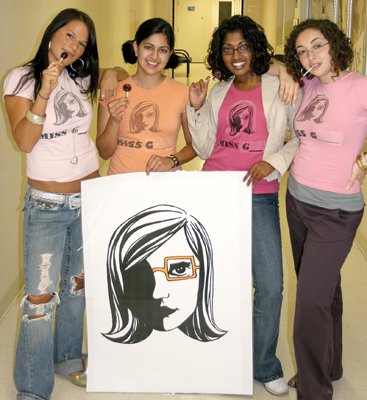
Did You Know?
- Of the 960 million illiterate adults in the world, two thirds are female
- Education is a critical ingredient in the empowerment process
- Only 43 percent of secondary school age girls are in class in developing countries
- Educated women are more likely to resist abuses such as domestic violence...and discrimination at home, in society or in the workplace

Join the Women's Faces in Education Campaign Today!
Either draw your self-portrait in this space, take a photograph of yourself and attach it here or visit our website at www.wix.com/themissgproject/index_new and use the face of Miss G herself!
This is my self-portrait/photo and I permit our partners Oxfam, Amnesty International and IANSA to use it to promote the campaign
Miss__G

Gender Myths
Weak vs Strong

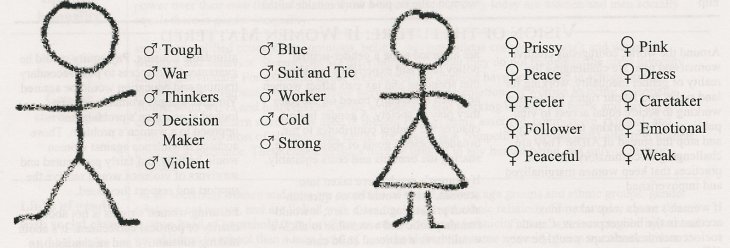
Why do we need to acknowledge these myths?
Because the worst thing you can call a man is a woman
Because women should not be paid the same amount as men because they are not of equal worth
We need a kind of Feminism that aims not just to assimilate into the institutions that men have created over the centuries, but to infiltrate and subvert them - Barbera Ehrenreich
Comic Relief


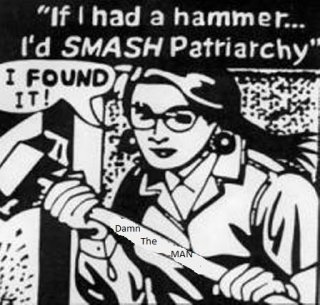
Table of Contents
Human Rights in Transition
by Tasha Rennie
On December 15th, 2011, the United Nations Office for the High Commissioner for Human Rights released its first ever report on the status of human rights of lesbian, gay, bisexual and transgender (LGBT) people around the world[i]. The report followed the historic resolution passed by the Human Rights Council on violations based on sexual orientation and gender identity in June 2011.[ii] The report highlights the forms of physical and psychological abuse and violence LGBT on top of other forms of discrimination that people have been subject to all over the world.
“Homophobic and transphobic violence has been recorded in all regions. Such violence may be physical (including murder, beatings, kidnappings, rape and sexual assault) or psychological (including threats, coercion and arbitrary deprivations of liberty). These attacks constitute a form of gender-based violence, driven by a desire to punish those seen as defying gender norms.”[iii]
The inclusion of gender identity in this report is significant. The report reveals that an estimated 680 transgender people were murdered in 50 countries between 2008 and 2011. The nature of violence against transgender people appears to be particularly brutal. In many countries there is little legal protection offered against these violations.
Yet, even in the most progressive countries, transgender people still face a level of discrimination significantly higher than many other minority groups.
In Canada, transgender issues were brought to the Parliament for the first time in 2010, with the introduction of the private members Bill C-389. Put forward by NDP MP Bill Siksay, the so-called ‘Bathroom Bill’, moved to add gender identity and gender expression to the Canadian Human Rights Act and Criminal Code.
Until this point, transgender people had been successful in challenging discrimination using the provisions on “sex” and “sexual orientation” of the Act. However, research from Carleton University has revealed that trans* people in Canada still face extraordinarily high levels of discrimination in the workplace and health care system, and often violence throughout their lives.[iv]
In February 2011, the bill was debated and passed through three readings before a positive vote moved it on to Senate. During the readings, the bill faced opposition from Conservative MPs, who officially claimed the amendment was vague and unnecessary. However, certain MPs, with ample support from groups like the Association for Reformed Political Action, the Catholic Womens’ League and REAL Women of Canada, were effective in mongering a good dose of ill-informed fear among their constituents over the “Bathroom Bill”.
Groups launched letter writing campaigns in opposition, and it is the nature of this backlash that illuminates not only the transphobia that exists in our society, but the inherent fear of gender defiance. Opposing arguments relied heavily on irrational misconceptions of transgender and transsexual people. The well-used bathroom argument proved to be a particular favourite.[v]
[i] UN issues first report on human rights of gay and lesbian people. (2011, December 15). UN News Centre. Retrieved from http://www.un.org/apps/news/story.asp?NewsID=40743.
[ii] UN Affirms human rights to transgender people. (2011, June 17). TGEU. Retrieved from http://www.tgeu.org
[iii] United Nations High Commissioner for Human Rights. (2011). Discriminatory laws and practices and acts of violence against individuals based on their sexual orientation and gender identity. Retrieved from http://www2.ohchr.org.
[iv] Bill C-389 (Historical). Open Parliament. Retrieved from http://openparliament.ca/bills/40-3/C-389/.
[v] Allen, Mercedes. (2011, Mar 26). Canada’s Trans Rights Bill C-389 Dies At Election Call. Retrieved from http://dentedbluemercedes.wordpress.com/2011/03/26/canadas-trans-rights-bill-c-389-dies-at-election-call/.
“Bill C-389 is a danger to our children,” said Charles McVety, president of the Institute for Canadian Values, to The Globe and Mail on February 10th, 2011. “If ‘gender identity’ is enshrined in the Criminal Code of Canada, any male at any time will be permitted in girls’ bathrooms, showers and change rooms as long as they have an ‘innate feeling’ of being female.”[i]
Not only irrational and based on absolutely no evidence, this argument is particularly cruel as it conflates trans* people with perverts and pedophiles, painting them in people’s minds as scheming sexual predators.
“As for the bathroom scare,” said NDP federal LGBT committee co-chair Mattew McLauchlin, “this one really hurts me. My partner is trans and I know what he goes through. In the more than one hundred jurisdictions around the world where similar protections have been put into place, there has never been a recorded case against anybody who has tried to engage in reprehensible behaviour in the washroom. Trans people already use washrooms and locker rooms, and it’s trans people who get subject to violence and discrimination.”[ii]
The bill didn’t get far in Senate, as there was no one to sponsor it as a priority. When the federal election was called shortly after, all pieces of legislation going through Parliament were thrown out. As of today, there are still no provisions for gender identity and expression in the Human Rights Act.[iii]
While trans* people will likely continue to fight discrimination with the existing provisions, the failure of this bill means a number of things. First, without specific legal protection against discrimination and hate, transphobia will continue to propagate within our society’s consciousness.
In regards to the UN’s report, Charles Radcliffe, the chief of OHCHR’s global issues section, told UN Radio that “one of the things we found is if the law essentially reflects homophobic sentiment, then it legitimizes homophobia in society at large. If the State treats people as second class or second rate or, worse, as criminals, then it’s inviting people to do the same thing.”[iv] The same can be assumed with regards to transphobic laws.
Second, it continues the institutionalization of the gender binary, and ultimately gender inequality. One of the biggest fears opponents of the bill put forward was that allowing gender identity, something that isn’t determined by biological sex, to be enshrined in legislation would lead to the destruction of the structured gender roles our society is built on.
"The implications of this bill are horrendous," said Gwen Landolt, vice president of REAL Women, "it changes the whole concept of gender."[v]
Opponents called the bill anti-family. But, by ‘family’ they undoubtedly mean a father, mother and 2.5 kids. A patriarchal society relies on a gender binary system where one gender inevitably dominates the other. When we trouble the idea of gender, suggesting that it is not inherent in our sex, and that it is, perhaps, neither male nor female, we begin to break down the dominant-submissive binary that has resulted in real, harmful inequalities for everyone.
[i] http://www.theglobeandmail.com/news/politics/ottawa-notebook/tory-veto-awaits-transgendered-rights-bill-in-senate/article1902266/.
[ii] Ibbitson, John. (2011, Feb 10). Transgendered-rights bill headed for defeat in Tory-held Senate. The Globe and Mail http://www.mcgilldaily.com/2011/02/bill-c-389-scores-a-victory-for-trans-rights/.
[iii] Payton, Laura. (2011, Mar 23). 10 bills become law Wednesday. CBCnews. Retrieved from http://www.cbc.ca/news/politics/story/2011/03/23/pol-royal-assent.html?sms_ss=facebook&at_xt=4d8b65d7f0517945%2C0.
[v] Turns, Paul. (2011, Jan 23). Canada: Transgender ‘Bathroom bill’ heads to third reading. Catholic Online. Retrieved from http://www.catholic.org/politics/story.php?id=40036.



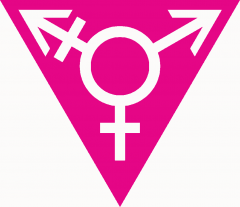
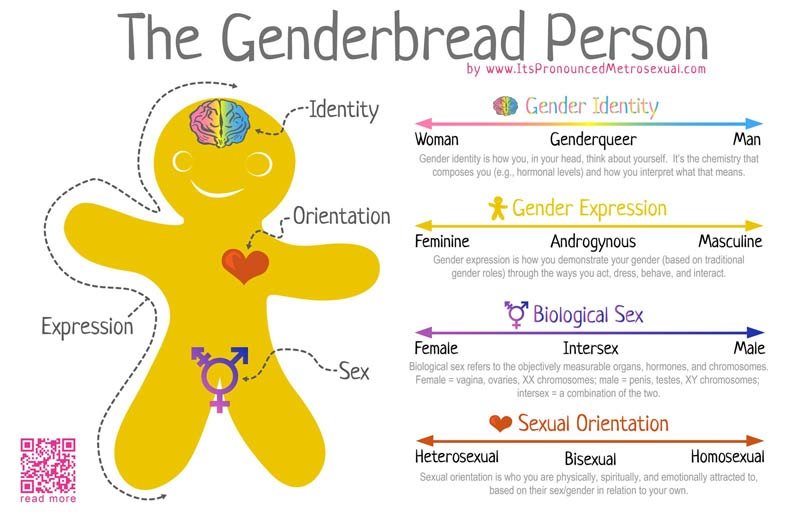
Some Terms
**Please note that these terms and their definitions are not universally accepted or agreed upon. Variations exist both within and outside trans communities in the usage and interpretation of these terms.
Trans: An umbrella term which refers to cross-dressers, transgenderists, transsexuals and others who permanently or periodically dis-identify with the sex they were assigned at birth.
Transgender: A range of behaviors, expressions and identifications which challenge traditional notions of sex, gender and sexuality in a given culture. Transgender refers to people who feel that their initial sex/gender designation is a false or incomplete description of who they are.
Transsexual: An individual who strongly dis-identifies with their birth sex and wishes to utilize hormones and sex reassignment surgery (or gender confirmation surgery) as a way to align their physical body with their internal gender identity.
Transvestite: An older term, synonymous with the more politically correct term cross-dresser, which refers to individuals who have an internal drive to wear clothing associated with a gender other than the one which they were assigned at birth. Transvestite has fallen out of favor due to its psychiatric, clinical and fetishistic connotations.
Cisgender: a class of gender identities where an individual's gender identity matches the behavior or role considered appropriate for one's sex.
Tasha Rennie is a Pulitzer Prize winning journalist from Vancouver. She has a combined Master’s degree in Gender Studies and Russian Literature, and enjoys fencing and sudoku in her spare time. Tasha is a prominent feminist/lgbt/environmental/anti-corporation/animal rights activist and has been arrested 18 times during protests and rallies.
I just wanted to write in and thank you for your inclusion of transgender rights in your discussion on gender inequality. I think it is important to acknowledge transgender people when we discuss gender, and also to remind the general public of the inequalities they still face, even in Canada and Europe. We’ve seen this recently with the sterilization issues in Sweden and other European countries. As well in Canada, with the recent issues regarding airline screening regulations. I think these issues show that even though we’ve come pretty far, we still have a ways to go in our fight for equality for everyone.
- J.D., Ottawa
Film Recommendation:
Southern Comfort (2001)
A documentary that follows the final year in the life of Robert Eads, a female-to-male transgender person who was diagnosed with ovarian cancer. Doctors in the Southern United States refuse to treat Eads due to his gender identity. By the time he receives treatment it is too late. The film focuses on the struggle of transgender people to reconcile their own identities with the norms of their societies, and the community of resistance and support created by transgender people to combat these challenges. Southern Comfort won the Grand Jury Prize for Documentaries at the 2001 Sundance Film Festival.
Arielle Cohen studied at the London School of Economics, dropping out after first year to start an organic farmer’s co-op in southern Ecuador in 2002. Since then she has written several New York Times Best Sellers on the importance of community based agriculture programs in both urban and rural settings. She currently holds a teaching post at the University of British Columbia. Arielle IS currently working on her fifth book, entitled “Race to the Bottom.”
Disclaimer: We are not referring to male gender,but rather institutions and systems that perpetuate gender inequality
Ryan Fernandez is now a book keeper at the Library of Interesting Things Which May Not Appear So At First glance, located in Aberdeen Scotland. After spending the first 7 years of his Undergraduate degree taking distance courses and searching for the meaning of life in the valleys and mountains of South America, he moved on to finish his degree and spent those final 4 years studying The History of Interesting Things at The Stratford Career Institute; the first to graduate from that program. After moving to scotland in 2010, he witnessed the famous kidnapping of Donnie Galloway, and embarked on a journey into the depths of the Atlantic Ocean; a story which would later be adapted into a film in the winter of 2011. Deciding to settle down, he gained employment at the Library of Interesting Things, and spends his days when not at work arguing in the comment sections of online newspapers.
Alec Cumming is a graduate of Dalhousie University, and received a Masters in Global Development Studies from Queen’s University. He is currently working as a CBC news correspondent in the Middle East and North Africa, specializing in issues of development and gender equality in Muslim countries. A former co-chair of the Married to Rights organization, which focuses on issues of spousal abuse in the Greater Toronto Area, he is a passionate activist with extensive experience in organizing grass-roots campaigns.
In response to the article entitled ‘The Long Road to Reform', I would just like to express my concern with the author’s lack of focus on western-based female rights organizations and their role to play in Saudi Arabia. While it is certainly true that real change in Saudi Arabia will require a shift in cultural ideals, and that it can be difficult for a non-Saudi organization to promote change without becoming bogged down in accusations of cultural imperialism, I think it is non-the-less important to acknowledge that these are rights that are guaranteed in the Universal Declaration of Human Rights. While Saudi Arabia refused to sign the Declaration, a number of other Muslim nations, like Pakistan, have signed and have actively criticized the Saudi position. This alone provides a basis for outside critique and justifies the pressure from western-based organizations on the Saudi Arabian government, who fails even to recognize the most basic protection of human dignity. No government should be excused from this kind of outside criticism; these rights are called universal for a reason.
-Heather, Edmonton
Thanks Damn the Man for your last issue. As always, I eagerly await its arrival every month. I found the article 'Get Your Hands Off Our Land' to be incredibly informative and interesting. I had no idea that this phenomena of land grabs was taking place, let alone the profound impact on the millions of women involved in agricultural production. I applaud your magazine for taking such a staunch opposition against the roller coaster of price fluctuations that has occurred in the price of grains in the last 4 years. Venture capitalists and investment bankers need to wake up and realize that speculating on a basic commodity affects not only the price, but also only hurts millions of people worldwide.
- Steven, Missouri
Human Rights
In
Transition
Pg. 7
The Long
Road to
Reform
Pg. 8
Get Your
Hands Off
Our Land
Pg. 9
RenderBy
Gender
Pg. 10
Damn The Man, I wanted to thank you for your article last issue regarding the shortfalls in our system in terms of the way we think and act based on gender. I wanted to add to your point, reinforcing the fact that it is us who maintains this system of patriarchal values, and it is us who must begin to alter it for the better. Furthermore, I wanted to let you know that I believe it is those patterns of thought which we learn from as young as the age of 2, which you have mentioned, that are responsible for more than just issues surrounding gender, but a mass of cultural issues which all intertwine, leading society down a destructive path. If we don’t re-think fast, who knows where the world will be in the future?
- Ivan, Iqualuit
Gender Myths...........................4
Equity in Education.................5
Megan Tremblay
Comic Relief..............................6
Human Rights in Transition...7
Tasha Rennie
The Long Road To Reform.............................8
Alec Cumming
Get Your Hands Off Our Land...............9
Arielle Cohen
Render By Gender................................10
Ryan Fernandez
Further Exploration..............................11
Back Next
 Magazine Posts
Magazine Posts Table of Contents
Table of Contents